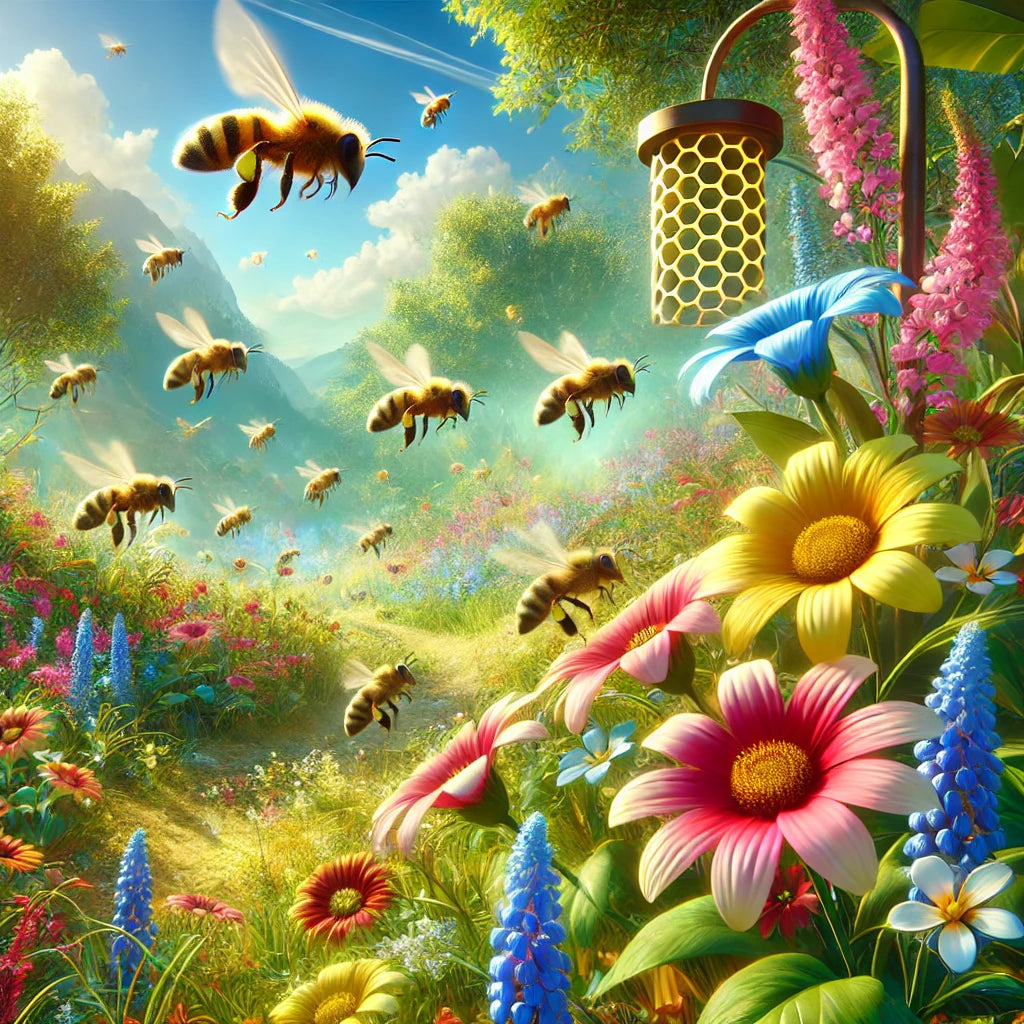Honey bees are constantly on a quest for survival, driven by the need to find nectar, pollen, and nutrients essential to their well-being. But the story of the honey bee quest bee swarm goes beyond simple foraging. One critical nutrient that bees seek is crude protein, found in pollen, which is vital to the growth and health of their colony. But what exactly is crude protein's role in a bee’s diet, and how does it impact swarming behavior and hive productivity? Let’s dive into the importance of crude protein in bee nutrition.
The Importance of Crude Protein in Bee Nutrition
Protein is an essential part of the honey bee diet, particularly for brood development and general hive maintenance. Bees obtain this protein from pollen, which varies in its crude protein content. Depending on the plant, pollen can contain anywhere from 6% to 30% crude protein, with higher levels being more beneficial for the bees’ nutritional needs. This protein is crucial for the growth of larvae and the production of royal jelly, which is fed to the queen and young bees. Without adequate protein intake, the hive will struggle to raise healthy bees, which can weaken the colony over time.
Beekeepers often supplement their colonies with pollen substitutes when natural sources are scarce. These substitutes provide the necessary amino acids to sustain the colony, ensuring that bees remain strong and productive throughout the year. Understanding how to start a bee farm includes knowing how to manage these nutritional needs, especially during times when pollen is less abundant.
Crude Protein’s Role in Swarming Behavior
The honey bee quest isn’t just about foraging; it’s also about reproduction and survival. One of the ways bees reproduce is by forming swarms. Honey bee swarms occur when a portion of the colony, led by the queen, leaves the hive to establish a new one. Nutrition, particularly protein intake, plays a vital role in the strength and success of these swarms. A colony that receives adequate protein is more likely to produce a strong swarm, capable of establishing itself in a new location.
If the colony lacks sufficient protein, however, swarming may be delayed or result in weaker bees, making it harder for the new hive to survive. This makes monitoring protein intake a crucial part of swarm management for beekeepers. Using tools like bee trap attractants can also help manage swarm behavior, directing bees to optimal locations for new hive establishment.
Preparing Your Hive for Protein-Packed Honey Production
As spring approaches and bees begin to forage more actively, beekeepers need to ensure their hives have access to high-protein pollen. This is especially important during the early brood-rearing period, when protein needs are highest. For beekeepers managing swarming behavior, ensuring bees are well-nourished can prevent unwanted swarms and help maintain colony stability.
Supplementing with pollen patties during times of pollen scarcity is a common practice. These patties are often made from yeast, soy flour, or other high-protein substitutes, providing the colony with the nutrients it needs to thrive. In combination with beetle traps for beehives and other hive management tools, beekeepers can maintain healthy, protein-rich hives throughout the year.
Ensure Your Hive Thrives with SwarmCommander
The honey bee quest bee swarm is a natural part of the bees’ life cycle, driven by their need for reproduction and survival. Crude protein plays a crucial role in this process, supporting both brood development and swarming behavior. By ensuring that your bees have access to high-protein pollen or supplements, you can help your colony thrive and be better prepared for successful swarming. Proper hive management, including the use of supplements and attractants, will help keep your bees healthy and productive throughout the year.
Support your bees on their quest for health and nutrition with the right tools. Visit Swarm Commander to explore products like bee trap attractants and beetle traps for beehives to help guide your bees and keep them thriving all season long.
Frequently Asked Questions About Honey Bee Nutrition and Swarming
Q1. What is the difference between natural pollen and pollen substitutes?
Natural pollen is the preferred source of protein for honey bees as it provides a wide range of nutrients. Pollen substitutes, such as patties made from yeast or soy, are used when natural pollen is scarce to ensure bees receive essential crude protein. Substitutes can be effective but are not as nutritionally complex as natural pollen.
Q2. How does protein impact the strength of a bee swarm?
Protein, obtained through pollen, is essential for brood rearing and queen health. A colony that has adequate protein is more likely to produce a strong, healthy honey bee swarm. If protein intake is low, swarms may be weak, reducing their chances of establishing a new hive successfully.
Q3. How can beekeepers supplement protein for their bees?
During times of low pollen availability, beekeepers can use pollen patties or other protein-rich substitutes to ensure their bees receive enough nutrients. These supplements are especially important during the brood-rearing period. How to start a bee farm often involves understanding when and how to supplement your bees with necessary proteins.
Q4. What role does crude protein play in the life cycle of bees?
Crude protein is essential for developing larvae, maintaining the queen’s health, and producing royal jelly. Without enough protein, bees cannot rear healthy brood, leading to weakened colonies and a reduced chance of successful swarming.
Q5. How do bee trap attractants help manage hive behavior?
Bee trap attractants help guide bees to specific locations, reducing the chances of swarming in undesirable areas and helping beekeepers manage the movement of their bees more effectively.



